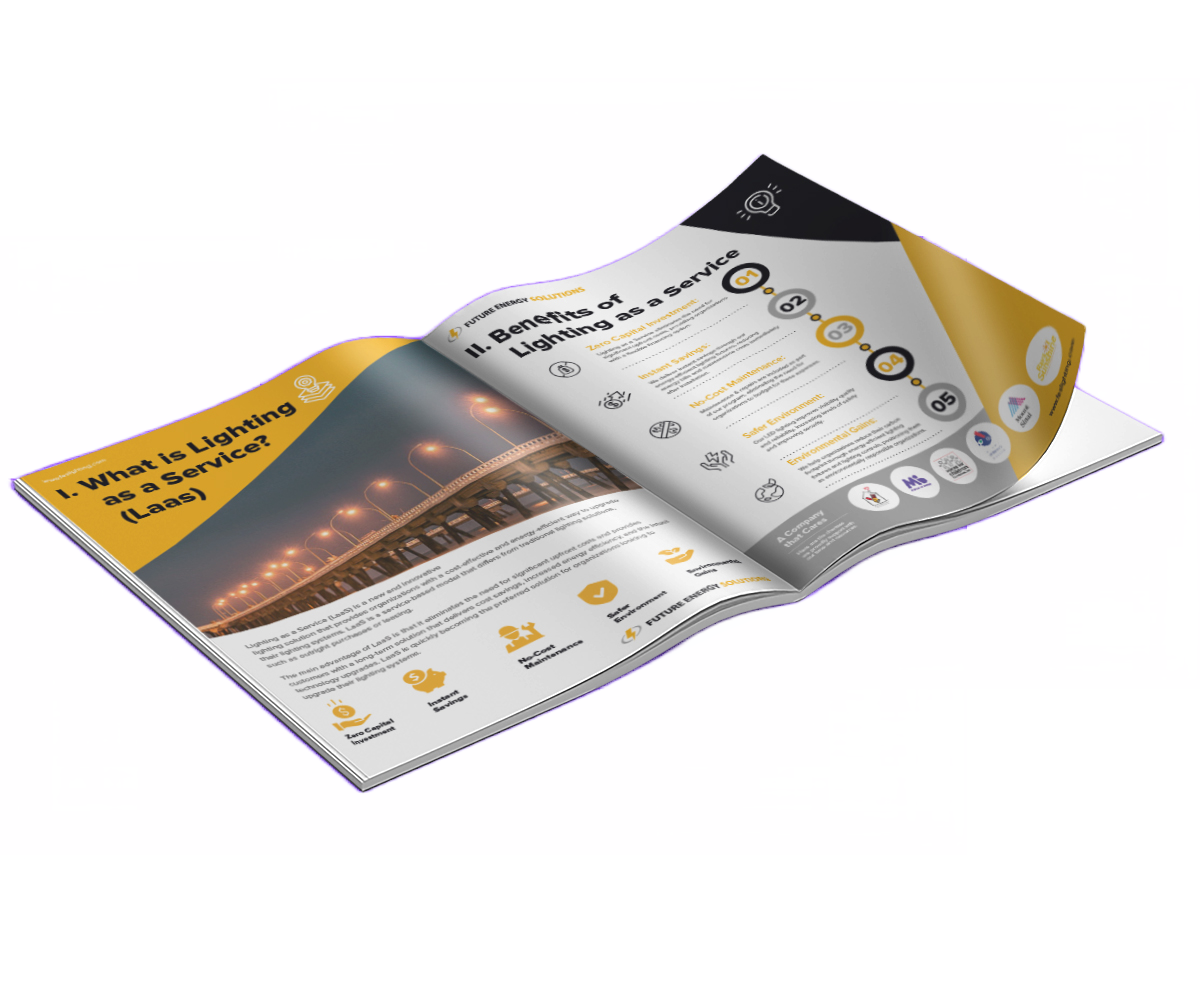FES Lighting addresses the question: "Are LED bulbs bad for you?" With the rise in popularity of LED bulbs, concerns about potential harmful effects have emerged.
Despite lower energy consumption, misconceptions about dangerous emissions and long-term health impacts persist. Our guide explores these perceptions, clarifying LED safety and busting myths surrounding their use.
Are LED lights bad for you?
LED bulbs are generally safe for most people, but excessive exposure to blue light emitted by LEDs can cause eye strain and disrupt sleep patterns. Limiting exposure before bed and opting for warmer light tones can minimize potential negative effects.
The main concern is the blue light emitted by these lights. Prolonged exposure to blue light may contribute to digital eye strain, which includes symptoms like dry eyes, blurred vision, and headaches.
Additionally, blue light can disrupt the body’s natural circadian rhythm, potentially causing sleep issues when exposed to bright LED screens or lighting at night. Use blue light filters on screens and choose LED bulbs with warmer color temperatures in living spaces, especially in the evening, to minimize these effects.
This strategy can help lessen the impact of blue light exposure, allowing individuals to enjoy the benefits of LED bulbs while minimizing negative health effects.
Take control of your lighting and minimize blue light exposure with our warm-toned LED bulbs. Contact us today!
Harmful effects of LED bulbs
While LED bulbs offer energy efficiency and environmental benefits, some potential adverse effects often arise from their widespread usage.
The primary concern stems from the blue light emitted by LED bulbs, which can contribute to various health issues such as eye strain and sleep disturbances.
Concerns around LED radiation have emerged, but studies indicate that the levels emitted are generally safe for everyday use.
In this section, we delve into the harmful effects of LED bulbs and the scientific reasoning behind such concerns.
Additional reading: best LED lights for warehouse
Blue light exposure
One of the most frequently discussed dangers of LED bulbs is the blue light they emit. This light can be particularly harsh on the eyes and may disrupt natural sleep cycles.
Modern LED bulbs have been designed to minimize health risks related to blue light exposure significantly. Improved technology, such as adjusting spectral output and using diffusers, helps lessen blue light intensity.
However, risks remain when LED bulbs are misused or overused, especially in settings with prolonged exposure to bright screens or lighting. In contrast, traditional incandescent bulbs emit much less blue light, focusing more on the warm spectrum, which can decrease digital eye strain.
When comparing incandescent vs LED lights, LEDs are more energy-efficient, have a longer lifespan, and produce less heat, making them a popular choice for modern lighting solutions.
Excessive exposure to any light can cause discomfort and eye strain if not used properly. The negative effects are most noticeable in situations like late-night device usage or poorly designed electronic displays.
By using blue light filters and selecting LED lights with adjustable color temperatures, many concerns can be effectively managed, allowing users to enjoy efficiency and cost-effectiveness.
Additional reading: commercial lighting cost per square foot

Glare and visual comfort
The negative effects of LED bulbs include glare, which can decrease visual comfort and impair visibility. Glare from LEDs often results from their bright point-light sources, causing eye discomfort in poorly lit or designed spaces.
However, this concern has diminished with modern LED technology. By using diffusers and frosted covers, manufacturers can distribute light more evenly, significantly reducing glare.
Mitigating glare is largely about proper usage and avoiding overuse in areas with softer, consistent lighting. Choosing LEDs with integrated diffusers and using lampshades or fixtures to limit direct exposure can help lessen glare-related discomfort.
Interestingly, glare isn't exclusive to LEDs; it can occur with any high-luminance light source, including traditional incandescent or halogen bulbs.
Glare and its negative effects mainly arise in specific environments, like workplaces or study areas where focus is vital. Thoughtful lighting design, such as strategically placing LED lights and selecting bulbs with adjustable brightness, allows users to enjoy LED benefits while minimizing glare-induced discomfort.
Additional reading: LED vs metal halide
Enhance focus and take care of your health condition linked to eye strain with our adjustable LED lighting today!
Circadian rhythm
The impact of LED bulbs on circadian rhythm is a significant concern, especially regarding blue light exposure during the evening. Blue light can suppress melatonin, the hormone that regulates sleep-wake cycles, potentially causing sleep disturbances.
Fortunately, modern LED systems offer solutions like adjustable color temperatures and the ability to emit warmer light in the evening.
Misuse or overuse of LED lighting, particularly in inappropriate settings, can worsen these issues.
This concern is not limited to LED lamps; fluorescent and compact fluorescent lamps (CFLs) also emit blue light, though to a lesser extent.
The problem is most acute in specific scenarios, like 24-hour work environments or homes with bright lighting used late at night.
By adopting better lighting practices and using modern bulbs thoughtfully, the negative effects on circadian rhythm can be significantly lessened while still enjoying the efficiency and longevity of LED bulbs.
Additional reading: LED lighting facts
Flicker
The phenomenon of flicker in LED bulbs is an often-overlooked issue, yet it remains relevant despite advancements in modern lighting technologies. Flicker can cause headaches and eye strain and worsen symptoms for those prone to migraines or photosensitive epilepsy.
Fortunately, high-quality LED products with better drivers and advanced electronics are largely reducing flicker. Features like high-frequency pulse width modulation (PWM) and constant current drivers contribute to stable light output.
Flicker problems often arise from misuse or poor installations, such as low-quality or mismatched dimmers. This issue is not exclusive to LEDs; traditional fluorescent bulbs can also flicker, though the rapid switching of LEDs may make it more noticeable.
While flicker isn't a concern for every application, it can be problematic in environments that require prolonged attention, such as offices, schools, or workshops. Users can minimize flicker-related issues by choosing well-designed LED bulbs with a high color rendering index (CRI) and low flicker metrics.
In the LED vs fluorescent debate, LEDs outshine fluorescents in energy efficiency and lifespan while providing better light quality without the flicker.
Proper lighting management, including selecting compatible dimmers and ensuring correct installation practices, further minimized flicker discomfort, balancing the benefits of LED bulbs with user well-being.
Additional reading: fluorescent light alternatives
Experience the beneficial effects of natural light with our LED solutions and contact us today!
LED light safety tips
LED bulbs are an excellent solution for energy-efficient lighting, but it's essential to be aware of the potential side effects of LED lights. By following some practical tips, you can mitigate these effects and enhance your lighting experience:
- Choose the Right Bulbs: Opt for LED bulbs with adjustable color temperatures to reduce blue light exposure, especially during evening hours. Compared to metal halide, LEDs offer faster start-up times and lower energy consumption, whereas metal halide lights can take longer to reach full brightness.
- Use Dimmers Wisely: Install compatible dimmers to help control brightness and minimize flicker.
- Install Diffusers: Use diffusers or frosted covers to distribute light evenly and reduce glare.
- Mind the Placement: Place lights strategically to avoid direct exposure to high-luminance sources in spaces where concentration is key.
- Consider Professional Installation: Ensure that LED lights are professionally installed to guarantee optimal performance and safety.
Investing in the correct LED solutions can enhance workplace comfort and productivity for business owners. Consider consulting with lighting professionals to tailor your lighting setup to your specific needs.
Additional reading: how to block fluorescent lights at work
Are LED lights safe? Conclusion and key takeaways
LED lights are generally safe and offer advantages like energy efficiency and longevity, but it's important to consider potential side effects such as glare and flicker.
Many people wonder, are fluorescent lights bad for you? Due to concerns about their potential health effects, fluorescent lights have been debated for their potential health impacts, with concerns about exposure to UV radiation and flickering affecting some individuals.
Finding the right business lighting solutions can significantly enhance productivity and energy savings, with LED options at the forefront of this shift.
FES Lighting can help you learn more about the right lighting choice for your business.
Discover the benefits of our light bulbs designed to enhance focus and create productive workspace. Contact us today to find the ideal lighting solution!


